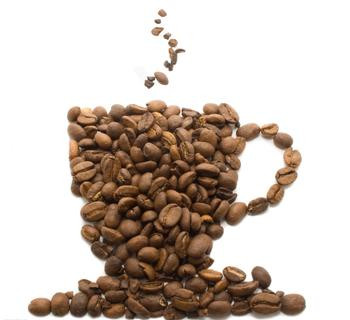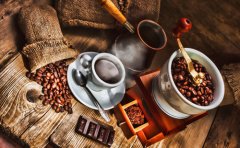The most basic factors that affect the taste of coffee from cinnamon baking to coke

The most important factor affecting the taste of coffee is roasting. In the case of the same raw coffee bean, at different degrees of baking, it may taste full of grass, or it may produce a hollow baking taste, or a sour, bright, or dry taste; sometimes it will bake a full consistency, or a delicious, round, bitter-to-sweet taste, or even a charred taste. The appearance of roasted coffee beans changes from a dry light brown to a dark brown with more and more oil on the surface, and finally to a completely black and glossy degree.
The process of color change in the appearance of coffee beans is now the basis for people to discuss "roasting coloration". The author prefers to call it "Roast Styles", because even if the same coffee bean has the same appearance, the middle baking interval (which refers to the preparation of several important temperature points in coffee roasting) is simply classified as the dehydration period before the first explosion-the first explosion period-the second explosion period-the second explosion intensive period. In the general small household bean baking machine, there are few that can control the baking interval time without any modification. At present, only Hottop and the latest Hearthware I-Roast have a more advanced design for the baking interval) different preparation will bake out different flavor characteristics. For example, when a coffee bean is roasted to a moderate color by slow roasting and the same coffee bean is baked to the same color by fast baking, there will be some differences in taste between the two batches of coffee beans. In addition, some people call the baking process "Degree of roast" or "Degree of processing". Although this term is more accurate, it is a bit difficult to understand. In this book, the author will uniformly use the word "Roast styles".
Important Notice :
前街咖啡 FrontStreet Coffee has moved to new addredd:
FrontStreet Coffee Address: 315,Donghua East Road,GuangZhou
Tel:020 38364473
- Prev

Coffee Roaster Large Industrial Roaster
After the American Civil War, coffee beans first appeared packaged for sale on shelves in major cafe systems. By the end of World War II, the dominant commodity in the North American coffee market was pre-roasted coffee beans/pre-ground coffee powder made by large roasters, and this type of high-volume roasting technology with centralized and standardized requirements was called coffee.
- Next

The change of the preference of the traditional roasting mode of coffee roasting
Like many other things associated with cultural differences, in the past, there was a special preference for coffee bean baking, but this phenomenon is becoming less and less obvious nowadays. As for the reasons why people prefer a particular baking model, it probably has something to do with the time they live in and the area where they live. We can make regional comparisons on this topic.
Related
- Beginners will see the "Coffee pull flower" guide!
- What is the difference between ice blog purified milk and ordinary milk coffee?
- Why is the Philippines the largest producer of crops in Liberia?
- For coffee extraction, should the fine powder be retained?
- How does extracted espresso fill pressed powder? How much strength does it take to press the powder?
- How to make jasmine cold extract coffee? Is the jasmine + latte good?
- Will this little toy really make the coffee taste better? How does Lily Drip affect coffee extraction?
- Will the action of slapping the filter cup also affect coffee extraction?
- What's the difference between powder-to-water ratio and powder-to-liquid ratio?
- What is the Ethiopian local species? What does it have to do with Heirloom native species?

